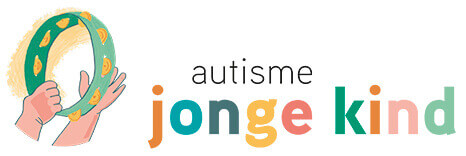
Step 2: Stimulating development and positive behaviour
As a parent, you can stimulate the development and behaviour of your child with autism (ASD) in various ways. By doing so, you can, for instance, encourage him or her to (positively) interact with the environment or to try new things. You will find practical tips on how to do this below.
Encouraging positive interaction
A child with characteristics of autism (ASD) learns the most about interacting with the environment from instances in which the interaction goes well. And not so much from the instances in which it does not go well. It is important to have fun with the interaction together.
You can motivate your child with autism to interact by doing the following:
- Suit the activities and conversations to your child's interests.
Keep playing relaxed. You can do this by aiming to have fun, rather than wanting to teach your child something. The main goal is to improve the interaction with your child. - Create one-on-one moments with your child.
During these moments, it is important that you truly pay attention to your child. Meaning that you are not distracted by, for example:- phone
- computer
- television
- siblings
- other activities
Encouraging development
The development of a child with autism (ASD) often proceeds differently. For example, development often occurs in leaps and bounds. It may also be the case that tension for (learning) something new blocks your child.
- Developing in leaps and bounds: The development of a child with autism often proceeds in leaps. Often the child struggles to learn new things and refuses to practise. Then, all of the sudden, he/she can walk, talk or ride a bike as if it’s the most natural thing in the world.
- Tension blocking: Sometimes the tension to learn new things can run so high that your child blocks.
Here are some tips to stimulate the development of your child with autism:
5-year-old Mijntje states that she absolutely does not want to move to the next grade. While chatting, she reveals that she is insecure about her abilities. She has got the idea that you have to be able to read in the third grade, and she doesn't know all the letters yet.
5-year-old Joris has to be encouraged again and again to swim another lap at swimming lessons. In his experience, he has finished the exercise as soon as hehas succeeded once. He doesn't see the point of repetition and practice. He already knows how it works, doesn't he?
- Focus on the things that are going well, rather than the things that are not. Children need moments of success to keep them wanting to learn. Maintain a balance of 1 in 5. This means that for every mistake or loss (of a game, for example), there are four moments of success.
- Try to interest your child in experiencing new things, without pushing them. It is important for your child to get motivated him or herself. For example, in learning to ride a bike. Many children with autism avoid new experiences. This is often due to fear of failure. These children want to be able to do something immediately. They have a lot of trouble with the practice process.
- Try to find out why your child does or does not want to do certain things. Blockages and twisted thoughts can be the cause of this. Sometimes children get ideas about all the things they should be able to do, which blocks them in their daily functioning.
- Make sure not to ask too much of your child. Try to think ahead for when things will get tricky. For example:Maybe your child really enjoys playing with another child. When you know that this regularly goes sideways, try to think of an activity that is more likely to be successful. If playing together is tricky, you can let the children play side by side. This way, your child will have a positive experience of "meeting up" with other children. Keep the play date short, this also increases the chances of success.
- Adjust your pace. Your child's pace is much slower than yours.
- Adjust your expectations. Think about what is really important to you. For example, that your child hangs up his/her coat, and what you don't want to turn into a battle. Or for instance that your child learns to tie his/her own shoes. Realise that sometimes your child is able to do things, but that they cannot always manage it in the moments that they should. For example: your child is able to dress him/herself, but doesn't succeed under time pressure, such as in the morning before going to school.
- Increase the number of success moments in everyday life. For example, you can make it easier for children to dress themselves by choosing easy trousers (without buttons) and easy shoes (with Velcro), thus making it more likely for them to succeed.


